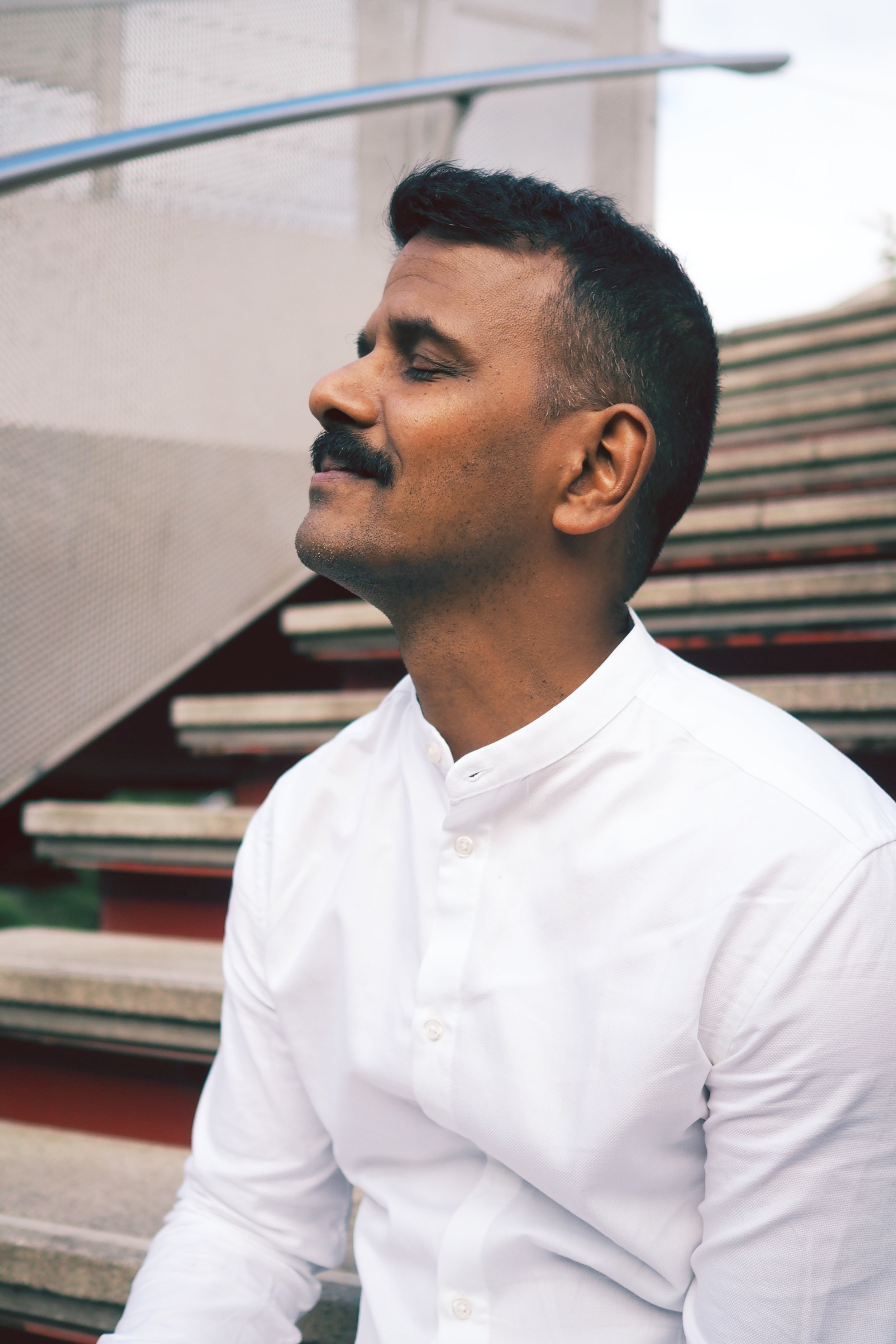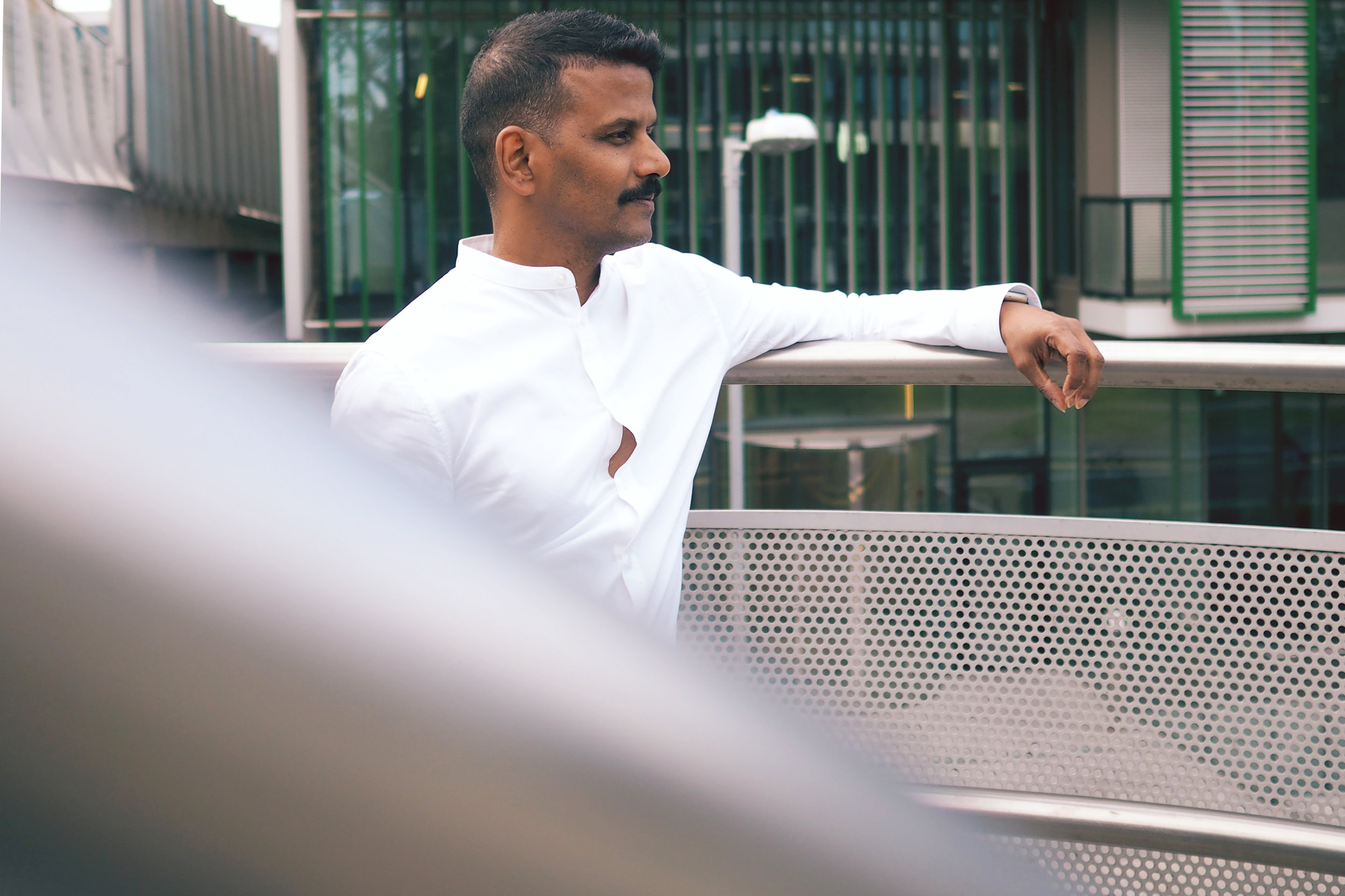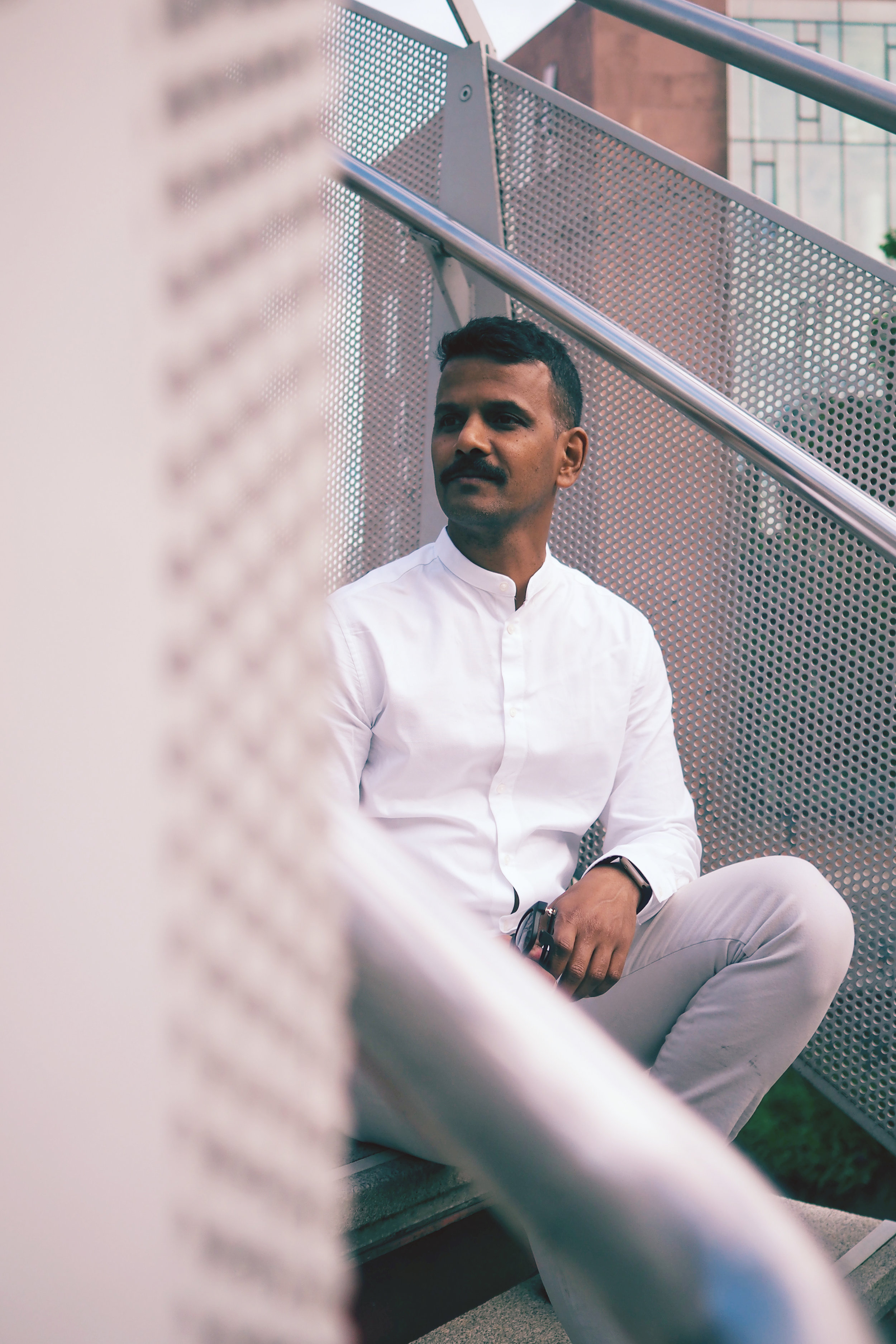Pradeep Mahadeshwar
Growing up as a gay man in Mumbai during the 80s and 90s was an enriching, exciting experience. Guys used to cruise at the suburban railway stations, or at the video parlours. I was always aware that I am different, but it took a few years to understand my sexual identity. Pradeep Mahadeshwar is a visual artist and designer, born in Mumbai and currently living in Dublin, arriving by way of London and Prague.
I was born in Mumbai, one of the most diverse metropolitan cities of India, and raised in an unusual Hindu family. Unusual because in our household my mother was the decision maker and my father always supported her decisions. My mother was a teacher, poet and an educationist. When I was a baby she was pursuing a Ph.D. in Indian poetry, so I literally grew up among books, and was introduced to the world writers and poets through them. As I remember, we were more like friends than mother and son. She never shies to discuss with me, everything that encompasses the word “life”.
During school, I got bullied almost every day for not playing cricket or football, for my stammering, for always being surrounded by girls. I mostly got bullied with the term “baailya” – a regional language term for a man who is not man enough. Bullying made me stronger, eager to follow my own path and always listen to my heart. I was an early starter. I never felt guilt, and I was never shy. During my college days, I got in touch with the LGBT organisation Gay Bombay. It changed my life forever.
In my country, we have more than fifty words to describe the queer sexuality in our mythologies and religious literature, and many more words in the regional spoken languages. It shows that an infinite, non-binary sexual aspect of life was an integral part of the culture. We have a visible transgender community across the country. In the pre-colonial era, sex was never limited to reproduction. The society which gave Kamasutra to the world was always open for the infinite possibilities to fulfil worldly, sexual desires.
One can see the infinity of sexual desires formalised in our temple arts, folklore, religious symbolism, and mythologies. Our male god takes the female form to seduce the other male god to acquire his powers! Our goddess dances naked after killing her opponent. A transgender character plays an important role in the story of Mahabharata told in Bhagwad Gita [an episode recorded in the great Sanskrit poem]. The interaction with nature, without any segregations by the "Do and Don't Law" was always the centre point of the ancient Indian civilisation.
The law that restricts the expression of sexual desires came into practice by the colonial invaders. Colonialism promoted a Christian and European norm of monogamous marriage and heteronormative racism. The law of sexual behaviour came to discriminate the native people, to make them feel guilty. It was a law of the land, not a law of nature! Everything was divided into two boxes – good or bad, the infinite non-binary lifestyle was divided into two sections – good and evil: acceptable by the law and punishable by the law
Forced to live double lives, people would leave the country to live their authentic lives, or be excluded and discriminated by the caste and class-based patriarchal society. The postcolonial era was a struggle to discard the Indian penal code – Section 377, established by the British rulers, which makes all sexual activities punishable if they are not for [reproduction]. The colonial law of sexual discrimination, mixed with postcolonial religions and caste-based politics was a lethal combination to fight with. It was a long, heartbreaking struggle to make them discard the law. Finally, it has changed but it will take another few generations to ease the brainwashed minds.
I have lived in interesting and unusual places. I lived in London as a fine art student, as well as a printmaker and visual artist. During the early days in London, we lived in an old abandoned park-keeper’s house at the edge of Barham Park, Wembley, London; then in a Georgian house at Barons Court, West Kensington. The Thames walk was a few meters away from that house.
I arrived in Ireland in 2012. I made the decision overnight, during the early spring season in our small home in Barons Court. It was a fine evening and we were talking about our future and new experiences in life. I wanted to have a family and he had one already here in Dublin. “He” was my husband. A beautiful person, a talented artist, a filmmaker and a fine Irish man. The apple of my eye. He had a great impact on my life, in how I think and look at the world. After my mum, he was the only person who inspired me from the core.
In Dublin, my first impression of the LGBTQ+ community was that it has a lack of colour; cold and unwelcoming. I was scared at that time. I have briefly witnessed the pre-Marriage Equality era, [and its] politically charged LGBT community, but primarily it was colourless and unaware of the notion of diversity.
I heard LGBTQ+ leaders talking about equality and not inclusion and diversity. It was a time when making new friends and acquaintances was difficult for a coloured person. I spent many lonely weekends when there was no one around to talk to, mostly going to the gay bar alone and standing there like a fool as people see through you. The sexual objectification of gay men of colour is a popular social practice in the local gay community. It is certainly an unpleasant and inhuman experience. Brown is only acceptable if it is from South America. Asians are untouchables. It is a strange place.
I met a few great people from the LGBTQ+ community through my ex-husband. His mum, dad, and nanny were great supports for a while even after our separation. I become a member of Dublin Front Runners and it changed many things positively. It was the first time I realised that I am not getting judged for my colour and origin. I would like to see the local LGBQ+ community show a little bit more empathy, and an inclusive approach towards the coloured, immigrant members of the LGBQ+ [community].
I took part in door-to-door canvassing for marriage equality on Griffith Avenue and in Ballymun. It was a pleasant experience. More than 180 houses. In Ballymun, people were good to me, most of them had a courteous smile on their face. Whereas, a rich lawyer living in a big house on Griffith Avenue angrily argued that no one is gay or lesbian in his entire family, so why should he vote yes?
Marriage equality has been achieved, but nothing has changed in terms of racism and the lack of understanding of diversity. Migration was, and will remain constant on our social landscape. We need to discuss intersectionality more often. When people leave their country, they carry their unique qualities, beliefs, and social standards with them.
As a gay man, I came to this country to live my authentic life without any shame, which was denied in my own country. Leaving my motherland wasn't a happy decision. What ground is [Irish] society offering me to [help me] stand without shame, without judgment of my colour? How much of the local LGBTQ + community is capable of offering me chances to build meaningful relationships? For how long people will keep judging me for my colour and origin? There are countless questions. It makes me feel that intersectionality is not always primarily only about identities: it is also about how the social structure makes certain identities vehicles of vulnerability.
A white gay man can walk into any club without facing any questions at the door, but the coloured man can be questioned for this sexuality and judged for his appearance. The general notion is that white gay men are safe in the gay club but coloured men can be trouble makers. People avoid talking about It. Even when you make an attempt to discuss these issue they shut your mouth by saying,”we are not racist”, "we don't see the colours”, or "it is only in your head". We are slowly, steadily drifting towards a colourblind society, where only white people have things to say and coloured immigrants have no existence because they are invisible – no one can see their colour!
Diversity cannot be simply accepted or rejected. It is not a choice between black or white. Acceptance has rejection at the other end. Diversity only can be understood by acknowledging the possibilities of the existence of an infinite variety of physical world as well as an infinite variety of emotions that can coexist, experienced and expressed by the inner self.
The LGBTQ+ community needs to understand that immigration is the future, and the hope for a healthy society. We have to create opportunities where the local LGBTQ+ community can interact with immigrants on an intellectual level and vice-versa. We need artists, writers, and performers to tell stories of their real-world. We need artists, writers, and performers from both sides who can ask critical questions.
How many coloured painters, writers, photographers, athletes, and performers do we have? If we don't have them in numbers, what is the reason? Are we failing to incubate ideas and new connections? If we are failing to facilitate a common intellectual platform, then how can we make improvements? We need to set examples in our real world. Why can't we have an Asian or African origin drag queens? Why can't we have a Korean DJ and why can't we play popular Bollywood music? Why do we have to see, listen and speak only that which is acceptable to the local LGBTQ+ community? We don't grow if we don't ask such questions.




